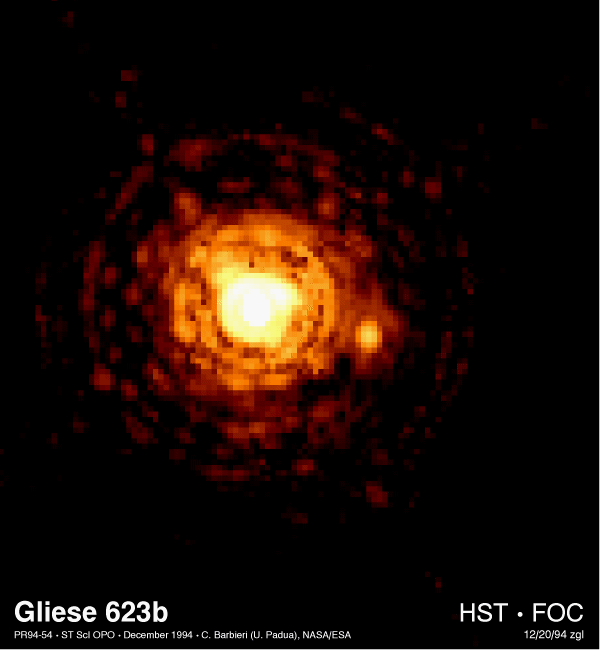Luminosity (bolometric) 0.084 L☉ ARICNS data | Luminosity (visual, LV) 0.044 L☉ Magnitude 9.66 Apparent magnitude (V) 9.66 | |
 | ||
Similar Gliese 581, Gliese 581 c, HIP 85605, Ross 248, Alpha Serpentis | ||
Gliese 710 will it smash into our solar system universe sandbox 2
Gliese 710 is a star in the constellation Serpens Cauda which is expected to pass through our Solar System's Oort cloud 1.35 million years from now. Its distance at closest approach is expected to be about 13000 astronomical units, or a mere 77 light days, with an uncertainty of about 50%. For comparison, Proxima Centauri is more than 1500 light days away. "This event will be the strongest disrupting encounter in the future and history of the solar system" according to astronomers Filip Berski and Piotr Dybczyński. At that close distance, it would be similar in brightness to a bright planet, at an apparent visual magnitude of about -2.7 (brighter than Mars), with a total proper motion around one arcminute per year.
Contents
- Gliese 710 will it smash into our solar system universe sandbox 2
- The gliese 710 close encounter
- Computing and details of the closest approach
- References

Gliese 710 currently is 63.8 light-years (19.6 parsecs) from Earth in the constellation Serpens and has a magnitude of 9.69. It has a stellar classification of K7 Vk, which means it is a main sequence star that is generating energy through the thermonuclear fusion of hydrogen at its core. (The suffix 'k' indicates that the spectrum shows absorption lines from interstellar matter.) The mass of this star is about 60% of the Sun's mass and it has an estimated 67% of the Sun's radius. It is a suspected variable star that may vary in magnitude from 9.65–9.69.

Earlier studies of its proper motion, distance, and radial velocity indicated that its closest approach would be closer to one light year, based on less precise Hipparcos data. The proper motion of Gliese 710 is currently very small for its distance, meaning it is traveling nearly directly in our line of sight.

In a time interval of ±10 million years from the present, Gliese 710 is the star whose combination of mass and close approach distance will cause the greatest gravitational perturbation of the Solar System.

The gliese 710 close encounter
Computing and details of the closest approach
Gliese 710 has the potential to perturb the hypothetical Oort cloud enough to send a shower of comets into the inner Solar System for millions of years, triggering about 10 visible comets per year, and possibly causing an impact event.
Earlier dynamic models by García-Sánchez, et al. in 1999 indicated that the net increase in cratering rate due to the passage of Gliese 710 would be no more than 5%. They estimated that the closest approach will happen in 1,360,000 years when the star will approach within 0.337 ± 0.177 parsecs (1.100 ± 0.577 light years) of the Sun.
Later calculations by Bobylev in 2010 suggested Gliese 710 has an 86% chance of passing through the Oort cloud, assuming the Oort cloud to be a spheroid around the Sun with semiminor and semimajor axes of 80,000 and 100,000 astronomical units. The distance of closest approach of Gliese 710 is difficult to compute precisely as it depends sensitively on its current position and velocity; Bobylev estimated that it would pass within 0.311 ± 0.167 pc (1.014 ± 0.545 light years) of the Sun. There is even a 1/10,000 chance of the star penetrating into the region (d < 1,000 AU) where the influence of the passing star on Kuiper belt objects is significant. Gliese 710 would have an apparent magnitude at the time of its closest approach of about 0.5.
The star with the second greatest perturbational effect in the past or future 10 million years was Algol, a triple star system that passed at at least 9.8 light years, 7.3 million years ago, but with a considerably larger total mass of 5.8 solar masses.
